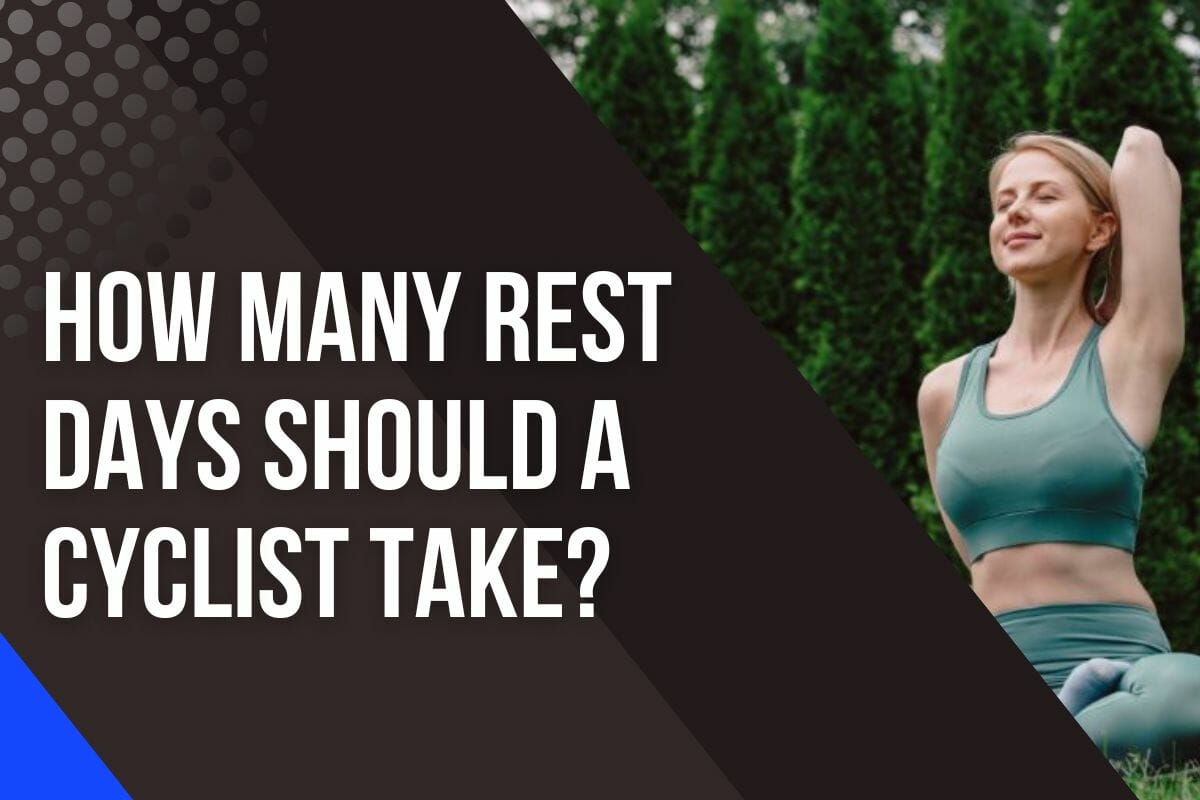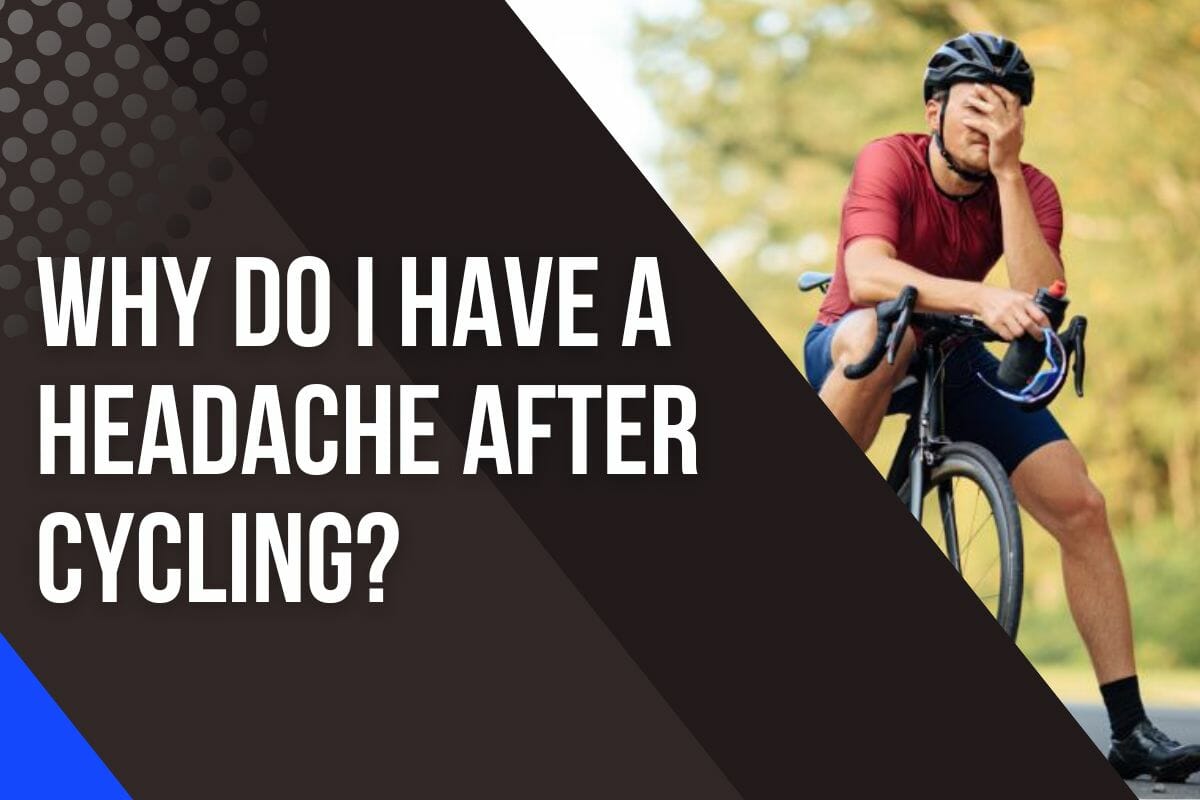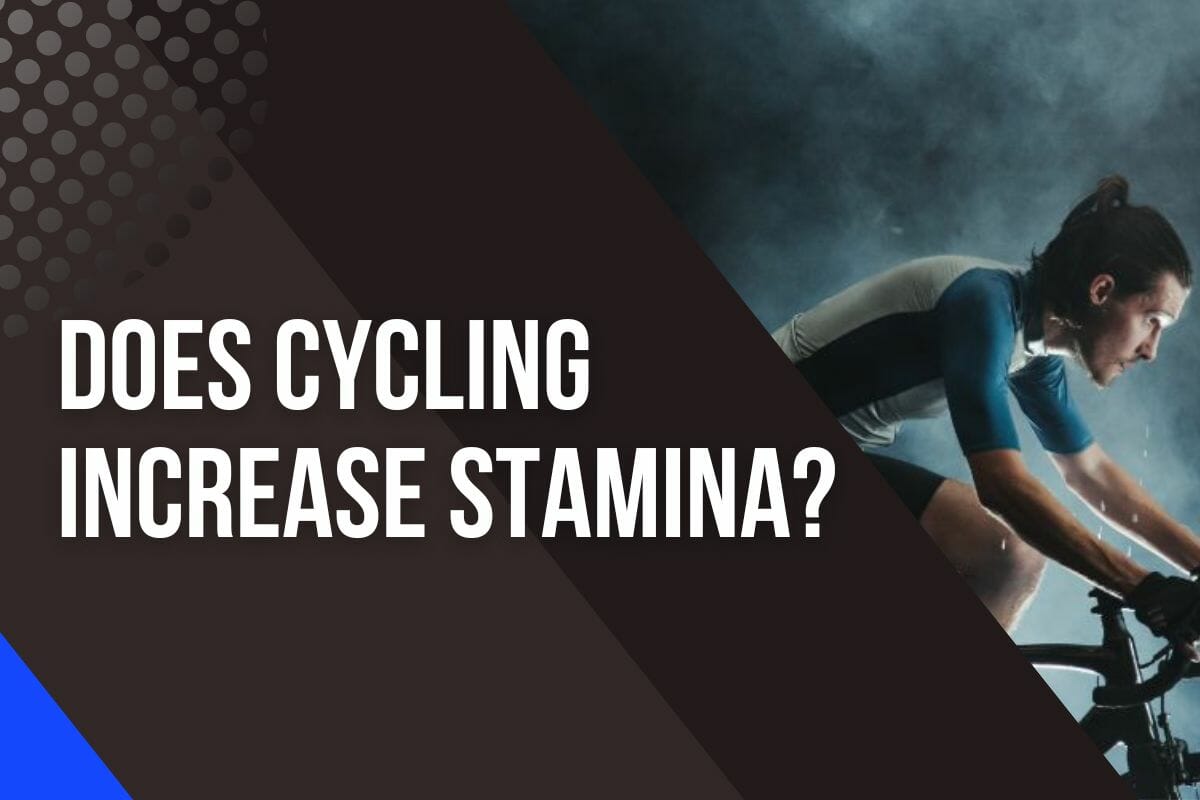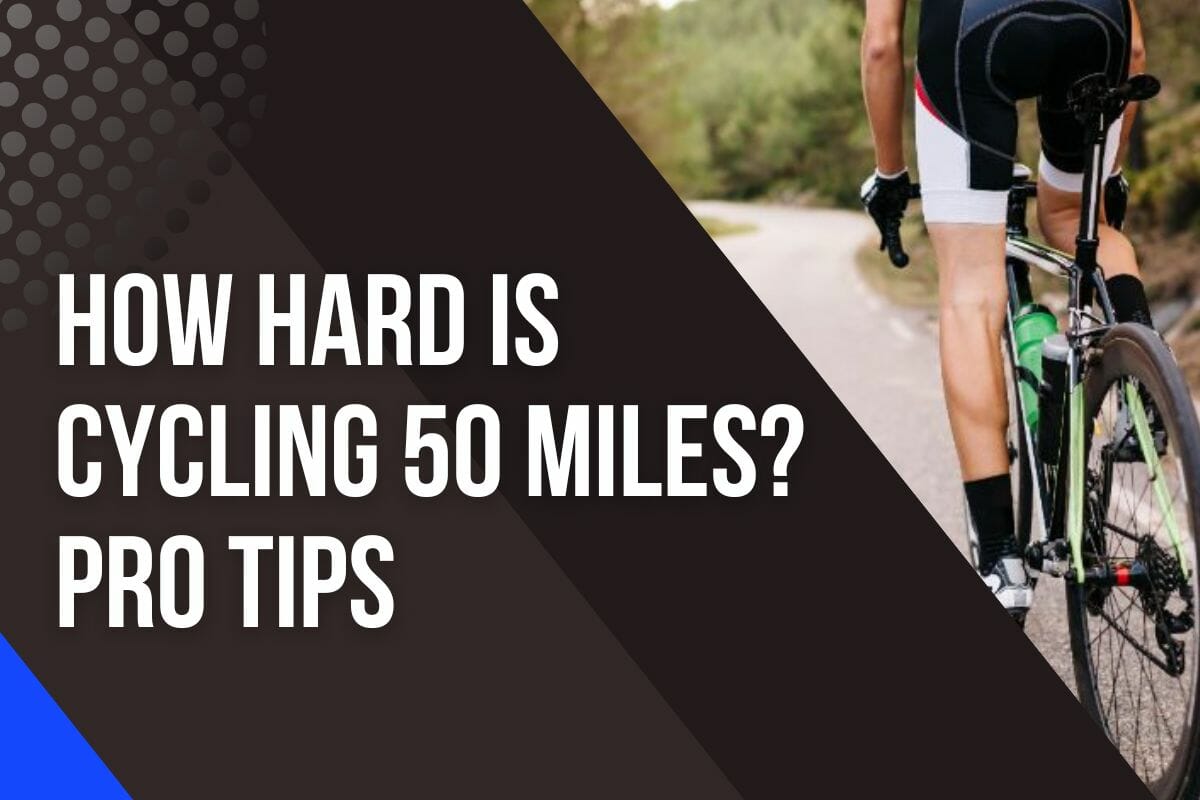Cycling VS Walking: Which Is Better To Lose Belly Fat?
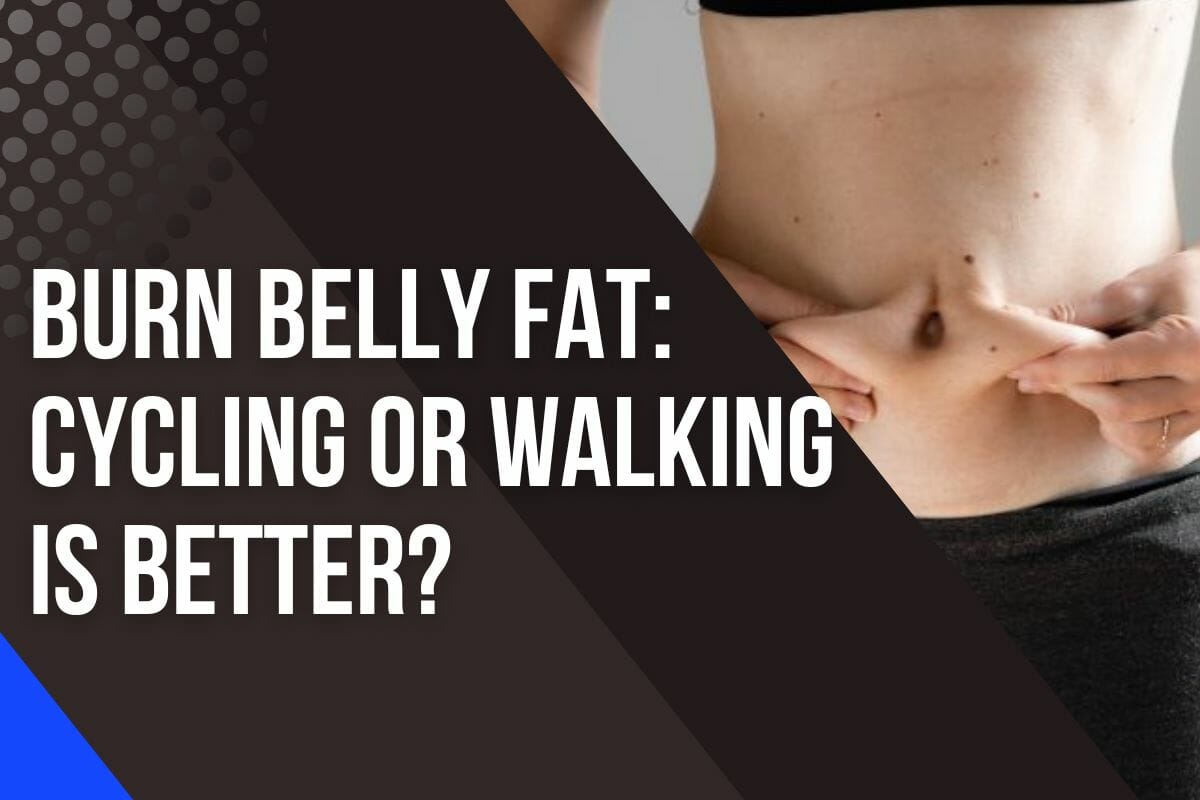
Are you tired of that stubborn belly fat refusing to budge? You’re not alone, and it’s a problem many of us face.
It can be overwhelmingly challenging to find the perfect exercise routine for our needs – one that doesn’t bore us or feel like a chore!
Among many workout options, two popular choices stand out: cycling and walking. But which is better when it comes to bidding farewell to your gut?
Let’s dive into this heated debate between two seemingly simple exercises – both with their unique benefits in helping you achieve those flat stomach goals.
As we unravel the pros and cons of each activity, you’ll have all the information needed to make an informed choice tailored just for you.
How Your Body Burns Fat
Understanding how the body burns belly fat is essential when deciding between cycling or walking as your go-to exercise.
Our bodies obtain energy from the calories we consume through food, and burning these calories helps to prevent storing them as fat.
To shed unwanted pounds, it’s important to create a calorie deficit by either consuming fewer calories or increasing our physical activity over a period of time.
It’s not just about counting calories, though; consistency plays a significant role in achieving long-term weight loss success.
The body burns fat to provide the energy it needs to perform daily tasks. Whatever you eat, whether it’s junk food or a balanced diet, is converted into calories of energy that the body can use when needed.

If you’re consuming more calories than your body will burn in a day, those extra calories are stored as fat.
A deficit of 3,500 calories must be created for your body to start burning one pound of fat per week, according to Mayo Clinic. (1)
This can be achieved by reducing your calorie intake by 500 up to 1,000 per day and engaging in physical activity such as walking or riding a bike.
A slow, steady pace will help you develop healthy habits that stick while also allowing your body to adapt more effectively.
Keep in mind that everyone’s journey towards a healthier lifestyle is unique – some may find walking suits their needs better, while others might prefer hopping on a bike for their daily dose of exercise.
Walking Vs Biking Workout: Which One Is Better?
When comparing cycling and walking, it’s important to consider factors such as intensity, duration, and personal preference.
Ultimately, the best workout for you is one that fits seamlessly into your lifestyle and keeps you engaged over the long haul.
Walking
I recently started walking as part of my regular exercise routine. I was a bit hesitant at first since I had heard that it was not very effective in terms of calorie burning.
But after doing some research and testing out the different walking regimes, I found that they had amazing health benefits.
Walking is the easiest and most cost-effective form of exercise available to people of all ages and fitness levels.

Plus, walking is suitable for people of all ages and fitness levels.
Walking can be done anywhere and at any time; it requires no equipment or special skills.
Harvard Medical School found that regular walking can reduce the risk of stroke or heart attack, help maintain a healthy weight, improve sleep patterns, reduce stress, boost your mood, and increase energy levels.
As you incorporate walking into your daily routine, remember that consistency is key to achieving results.
Aim to walk at least 8,000 to 10,000 steps per day at a brisk pace to maximize calorie burning and increase cardiovascular benefits.
Biking
So, you’ve decided to take up biking as a way to shed those pesky extra pounds and achieve your dream waistline. Smart move!
I love biking, it’s a great way to get outdoors and explore the world around you.
I started biking regularly as part of my fitness routine more than 10 years ago and it has been one of the best decisions I have ever made.
Hopping on a stationary bike or hitting the road for an exhilarating ride is not only fun but also offers fantastic aerobic exercise that can kick-start your weight loss journey.
Plus, cycling allows you to enjoy scenic routes and fresh air while toning your muscles – what’s not to love?

I usually like to take my bike out onto the road or trails around my neighborhood and go for a long ride.
Not only do I get some good exercise in but I also get to enjoy some fresh air and see beautiful nature scenes at the same time!
The best part about cycling is that it’s easy to fit into your lifestyle regardless of your fitness level or goals.
You can just go for leisurely rides if that’s what you’re after or you can push yourself with more intense biking sessions if you want extra calories burned in a shorter period of time.
Incorporate regular cycling sessions into your weekly routine and watch as the belly fat melts away.
Pedal Your Pounds Away: How Biking Can Shed Your Fat
Now that you’re considering biking for weight loss, it’s important to understand how cycling can help target and reduce belly fat.
According to the Harvard Health Publishing calories-burned chart, biking for 30 minutes at a moderate pace for someone who weighs 155 pounds can result in burning 298 calories. This is almost 100 calories more than walking outside at a moderate speed.
As an aerobic exercise, cycling not only provides an excellent cardiovascular workout but also engages various muscle groups, including your core.
This combination of consistent cardio activity and targeted muscle engagement makes cycling a powerful tool in the fight against stubborn belly fat.
Biking also allows you to adjust the intensity of your workout in order to get that perfect fat-burning level effortlessly.
When incorporating cycling into your fitness routine, remember to vary your workouts by alternating between moderate and more intense sessions.

A January 2012 article published in the journal showed results where participants of an aerobic exercise program lost more belly fat than those who didn’t do such exercises.
Living in a place with bike paths or safe roads is key to biking. It’s also a little bit expensive of an investment – a decent starter bike will cost a minimum of $300 (with high-end bikes costing up to thousands of dollars) and helmets can range from $20 to $50.
So, you must take into account both your budget and your environment before choosing biking as an exercise option.
If you decide to bike, the rewards are great. It’s an excellent form of cardio and it can be done almost anywhere.
Plus, it’s much more affordable than, say, a gym membership. So if you have the means, biking can be an excellent choice for a healthy lifestyle.
What Muscles Do Cycling Tone?
Now that we’ve compared cycling and walking for reducing belly fat, let’s dive deeper into the specific areas where cycling can help tone your body.
As mentioned earlier, cycling is an excellent form of aerobic exercise that predominantly works the ‘slow-twitch’ muscles, which are essential for endurance activities.
The muscle groups targeted during a regular cycling routine include not just the ones around your waistline but also those in your lower body.

Here’s a breakdown of the primary areas that benefit from consistent cycling:
- Quadriceps: These large muscles at the front of your thighs provide most of the power needed to pedal.
- Hamstrings: Located at the back of your thighs, these muscles work together with the quadriceps to maintain smooth pedaling motion.
- Glutes: Your buttocks get a great workout while cycling due to their role in hip extension and stabilization.
- Calves: These muscles located on the back of your lower legs play a crucial part in pushing down on the pedals during each stroke.
- Hip flexors: Although not as prominent as other muscle groups, they support proper posture and contribute to efficient pedaling mechanics.
While it’s true that both walking and cycling can aid in burning calories and shedding belly fat, incorporating a well-rounded fitness regimen focusing on various aspects like strength training and balanced nutrition will lead you closer to achieving your physical goal.
Where Does Cycling Burn Fat?
Cycling is often touted as one of the most effective ways to burn calories and fat, but where does this fat actually come from?
Our bodies store fat in two main areas – under the skin, known as subcutaneous fat, and around our internal organs, which are often referred to as visceral or abdominal fat.
Men and women tend to store their fat in different places; pre-menopausal women generally have more gluteal and thigh fat while men are more likely to accumulate abdominal fat.
Before cycling can start burning away at our stored fat deposits, it must first dispose of the easily accessible energy sources.
These sources originate from carbohydrates such as sugars or starches that were consumed in meals prior to exercise.

Additionally, some glucose – which is essentially sugar stored within the body – will already exist in the muscles or liver for easy burning during physical activities like cycling.
Exercising helps clear these shelves faster than if no activity had taken place at all.
Once these sources are emptied, then cycling will start to target our stored fatty deposits.
How Often Should You Cycle To Lose Belly Fat?
Now that we’ve explored how cycling can help burn fat, you might be wondering just how often should one cycle to effectively lose belly fat.
As mentioned earlier, it takes about 6 weeks of consistent activity for most people to notice a reduction in belly fat, and 12 weeks to develop the habit fully.
To achieve this, incorporating cycling into your routine on a regular basis is crucial.
According to the Department of Health and Human Services’ Physical Guidelines for Americans, to see significant results in shedding belly fat, aim to exercise 150-300 minutes per week at moderate intensity or 75-150 minutes per week at vigorous intensity. (2)
This means that during your rides, you should feel slightly out of breath but still be able to hold a conversation with brief pauses between sentences.
Over time, you’ll start to notice changes in your body composition like increased muscle mass and decreased fat percentage.
Remember, consistency is key – make an effort to maintain this level of activity every week while also paying attention to other factors like diet and sleep habits.
How Long Does It Take To A Slimmer Waistline?

As mentioned earlier, the average person can start noticing changes in their belly fat after about 6 weeks of consistent cycling.
However, like any other fitness goal, individual results may vary depending on factors such as diet, starting weight, and intensity of exercise.
It’s essential to keep in mind that consistency, commitment, and patience are your best ally when embarking on a mission to shed those stubborn pounds around your waistline.
Remember that combining regular cycling sessions with healthy eating habits will accelerate progress even more.
Is Cycling Effective For Burning Thighs Fat?

Pedaling relies heavily on those muscles to propel you forward.
As a result, one might naturally assume that this exercise would hold great potential for toning and sculpting the thighs.
Here are four key factors to consider when evaluating its effectiveness in targeting thigh fat:
- Intensity: Cycling with more power and incorporating bursts of energy will help build muscle, which in turn contributes to increased calorie burn.
- Cadence: A higher average number of pedal strokes per minute (80 to 110 RPM) over longer distances enhances your chances of burning calories and reducing fat.
- Duration: Riding for extended periods allows your body to tap into its stored energy reserves, thereby increasing the likelihood of trimming excess fat.
- Variety: Mixing up workouts by alternating between high-intensity interval training (HIIT), steady-state rides, and hill climbs can keep things interesting while maximizing results.
So does cycling indeed lead to leaner legs and reduced thigh fat? The answer lies in leveraging both intensity and duration within your riding routine.
By pushing yourself during challenging intervals or tackling steep inclines while maintaining a consistent cadence throughout longer sessions, you’ll be well on your way toward achieving enviably toned thighs.
Burn Calories Like A Boss: Which Activity Does It Better?
Let’s compare walking and biking to see which is better for calorie expenditure.
The answer is pretty clear: biking is far superior in terms of calorie burn (see how many calories you can burn with a 20-mile ride).
Even if you were to walk 1 hour at a speed of 3 km/h, you’ll only burn an average of 200 calories. Biking, on the other hand, would burn 300 calories.
Walking one mile (1.6 kilometers) usually takes around 6 minutes of brisk walking or 7 minutes of jogging. During this period, an average person will burn about 100 calories.

While walking burns 9 calories per minute, biking burns 14 calories per minute.
This means that you could burn 300 calories riding a bike for 20 minutes at a pace of 10 mph, whereas you would need to walk for 55 minutes to burn the same amount.
As you can see the difference between walking and biking is quite significant.
The phenomenon behind this is simple – biking uses a greater amount of muscle power and athleticism as it generally requires riders to move in a cyclical motion with increased exertion due to higher rpm’s, and tasks such as uphill riding require an even greater output of energy expenditure.
Cycling is much more effective for calorie expenditure than walking during the same period of time. Biking can help you burn twice as many calories in the same amount of time.
Which Pumps Up Your Muscles Better?

Both activities offer unique benefits in terms of muscle activation and overall health improvement.
But which one truly works muscles better?
Let’s dive into the specifics:
- Muscle Strength: Cycling generally requires more effort from various body muscles, leading to increased muscle strength over time compared to walking.
- Cardiovascular Health: Biking can improve your cardiovascular system by 30%, making it an excellent option for long-term weight loss and heart health.
- Gluteal Activation: Both walking and cycling uphill and standing up while cycling engage your gluteus maximus muscle effectively, but biking offers additional advantages due to its upright posture.
- Quadriceps Engagement: When seated during cycling, the quadriceps are heavily involved in generating force – much more than they are when walking.
- Calf Muscles: The calf muscles (soleus and gastrocnemius) play crucial roles in both cycling and walking; however, they work harder during the push phase of cycling.
After considering these factors, it becomes evident that incorporating both cycling and walking into your fitness routine can lead to well-rounded results.
While cycling has an edge in working specific body muscles more intensely, including regular walks during the active recovery period will help maintain your health.
Which Burns More Fat?
When it comes to burning fat, both cycling, and walking can be effective. To determine which is better for you, you will need to consider your goals, fitness level, and the type of exercise that you prefer.
I have personally found cycling to be an effective way to burn fat. It requires a lot of energy and effort to ride a bike, so I’m able to burn a lot of calories within a short period of time.
Aerobic activity helps me keep my blood pressure in check while also increasing my cardiovascular fitness.
If you cycle enough to burn 1,000 calories a day, biking becomes the superior choice compared to walking.
However, for most people who only ride for 30 minutes a day, the number of calories burned through walking will still surpass the amount burned through biking.
So, when your objective is weight loss and burning fat, either activity works just as well.

When researchers compared cycling and walking for their effects on fat metabolism, one study found that walking boosted fat burning more than cycling. (3)
Another examination determined that weight-bearing exercises such as walking and running were associated with lower levels of a particular type of fat that gathers in the bone marrow, in comparison to cycling.
Walking has a greater fat-burning effect than biking. The reason behind this could be that walking is a weight-bearing sport, while cycling is not.
Which Builds More Strength?
So, you’re eager to know which activity builds more strength between cycling and walking?
Well, let’s dive into how each of these activities incorporates strength training and impacts your fitness level differently.
Cycling certainly takes the lead when it comes to building lower body strength. Pedaling against resistance works out those leg muscles, leading to stronger quads, hamstrings, and calves.
Additionally, engaging in high-intensity interval sessions on a bike will not only increase your cardiovascular fitness but also ramp up your muscular power.

Walking, on the other hand, may be less intense in terms of muscle activation but still provides core stability benefits and helps maintain overall muscle tone.
To get the most out of walking as a form of exercise for strength development, consider incorporating brisk walks or hiking with inclines that challenge you based on your current fitness level.
Now imagine combining both cycling and walking in your weekly routine – you’ll have the best of both worlds!
By switching things up regularly, you can maximize the physical benefits of these two low-impact exercises while keeping things fresh and enjoyable.
Should I Cycle Or Walk If I Have Injuries?
For those who are dealing with injuries, deciding between cycling and walking to reduce belly fat can be quite challenging.
For me, it depends on the type of injury. If I’m dealing with a muscle or joint injury, then walking is the better option.

Walking allows me to get in some physical activity without putting too much strain on the affected area.
This form of exercise also helps keep my blood flowing and can help reduce stiffness, which is great for recovery.
I also find that walking helps clear my head and gives me time to think and relax.
If you’re dealing with an injury that limits your mobility or range of motion, then cycling might be a better option as it does not require a lot of movement from your joints.
But make sure to consult with your doctor first.
Cycling is also great if you’re looking to maintain your fitness level while recovering from an injury.
The low-impact nature of cycling makes it a great way to get in some physical activity without exacerbating your existing pain or discomfort.

Overall, it’s important to take into consideration both your injury and overall health goals when deciding between cycling and walking for exercise purposes.
Each person’s body responds differently to various forms of exercise, so it’s important to consider your unique situation when making a choice.
Final Thoughts
Both cycling and walking can be effective for reducing belly fat depending on your personal preferences, fitness level, age, and gender.
Cycling is a fantastic way to burn calories, tone muscles, and improve cardiovascular health.
As an engaging aerobic exercise, it targets not only the legs but also engages the core muscles, which are crucial for reducing belly fat.
I’ve been cycling for a few years now and I can confidently say that it has helped me to achieve my weight loss goals.
So go ahead, hop on that bike, and start pedaling towards a healthier life with every turn of the wheels!

